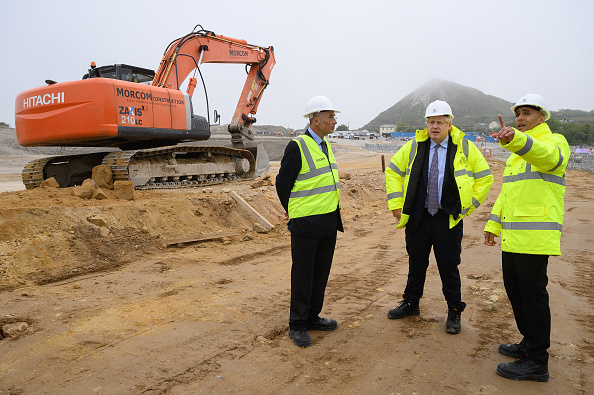Johnson wanted to build a bridge to Ireland but can’t build enough homes

Of all the mistakes made during the Referendum campaign by Team Remain, former Chancellor George Osborne was guilty of a whopper in May 2016.
A month before people cast their vote, the Tory numbers man warned that Brexit could knock 18 per cent off house prices.
At least one younger commuter on the train home that night said he’d be voting Brexit on the back of it – as it meant he might finally be able to afford to get on the ladder.
Obviously, it didn’t quite turn out like Osborne predicted.
Despite some quite clear negative economic consequences of Brexit, house prices are overheating like the good old days. It’s incredible to think more hasn’t been written about the staggering figures last week. Average house prices rose by £27,000 to a record £275,000 at the end of 2021 – £27,000, more than many teachers earn in a year.
Perhaps such figures are just priced in now. People shrug and get on with it. A cursory Google search turns up dozens of articles warning about teachers being on the verge of homelessness or cleaners having to save for 102 years to buy a house.
But that doesn’t make it right.
Among all the issues that haven’t been addressed by the government, be it social care or the NHS, housing stands out as the daddy of them all, if we sidestep an impending WW3.
And it comes down to basic supply and demand, there simply aren’t enough properties in the places where people need them.
The National Housing Federation estimates at least 340,000 new homes are needed each year – of which 145,000 should be affordable.
Economists trace the root of the problem back to Margaret Thatcher’s transformational decision to give people the right to buy their council home. As many as 1.5 million people took up the offer, in turn shrinking the stock of cheap housing.
Politicians have repeatedly promised to address the problem. A decade ago, David Cameron pledged to get Britain building but ended up scrapping requirements for developers to build affordable housing in their new developments.
In 2017, Philip Hammond (remember him?) pledged the government would build 300,000 homes a year – it didn’t happen. In 2019 Boris Johnson boasted his government would get to 300,000 a year by the ‘mid-2020s’. New builds didn’t reach 200,000 in his first year.
You’d think that of all the politicians, a prime minister who once promised to build a new four runway island airport in the Thames Estuary and a bridge from Scotland to Ireland could come up with a vision for, say, the biggest construction programme peacetime Britain has ever seen. Because that’s what Britain needs.
But the embattled PM has been strangely quiet on the issue. He could incentivise developers and offer tax breaks as a way to get things moving. But the government is currently in a stand-off with the industry over cladding and the Treasury is also about to whack them with a 4 per cent Residential Property Development Tax. “We may as well have Jeremy Corbyn in charge,” one exec remarked last week.
Then there’s planning. The interventionist nature of politically motivated, and poorly run, councils has long been a problem. And any attempt to revolutionise planning enrages Tory voting Nimbys.
Just look at the Chesham by-election defeat last year – blamed on the Planning Bill designed to make it easier to hit house building targets by encouraging councils to back plans in “renewal” areas or “growth” zones.
And finally, of course, there’s the fact that more house building at any real scale will likely subdue prices, in turn threatening the savings of those lucky enough to be planning to use their home as a retirement vehicle.
You’d think it would be prime territory for Labour. Yet there’s no current plan. “They don’t really know quite what to do,” one insider said.
It’s a scandal that housing isn’t higher on the agenda.
The “wonks” are trying. Economist Matt Kilcoyne suggests marking the Queen’s Jubilee by opening up green belts for new hyperdense hamlets connected to bigger cities by electric rail.
He adds renters could be given tax rebates – put directly into ISAs – to encourage saving for a home and to address the growing wealth divide in property.
I’m old enough to remember New Towns when they were relatively new. Places such as Harlow, Milton Keynes, Basildon. It’s amazing to think they date back to legislation in 1946 – almost 80 years ago.
The government owes it to the voters of tomorrow to think of something as grandiose now.